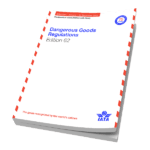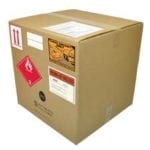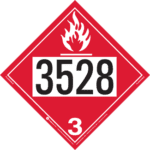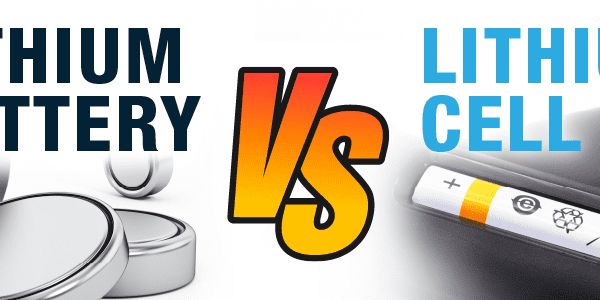This post was originally published in January 2018 and has been updated in September 2020 for accuracy.
How should you provide quantity on a shipper’s declaration for an engine?
Generating a shipper’s declaration for an engine isn’t exactly new to me. I have been creating shipper’s declarations for engines since the very first time I stepped into the DG packaging world, and that was a long time ago. Therefore, it hit me pretty hard when a client’s shipment, containing an engine, was rejected by their air carrier.
Engines and UN Numbers
For many years the UN number for engines and vehicles were the same and it was classified as hazard class 9. Just recently it was changed so that each type of engine has their own UN number and hazard class. Therefore, internal combustion engines containing flammable liquid is classified as UN3528 and falls under hazard class 3.
My client said there was a small amount of diesel fuel inside (it wasn’t drained). Based on this I classified his engine as UN3528. He provided me with the completed shipment detail form which provided me with all the details of the shipment including net weight of the engine and the amount of fuel inside the engine.
Quantity of the Engine on the Shipper’s Declaration
I started to work on the shipper’s declaration and had to stop at the “Quantity and type of packing” section. There wasn’t an immediate measurement I could use for the engine. As per column “J” and “L” of the IATA regulation it says, “no limit.” I read packing instruction 378 and it didn’t indicate the quantity measurement either.
So I started to think about how I was going to present “quantity”.
Would I use the weight of the engine or the quantity of fuel inside the engine?
I started to rationalize the conundrum and came to the conclusion that the reason the engine is considered a dangerous good is because it contains flammable liquid. Otherwise it would be just a piece of metal; hence, why it is classified as hazard class 3 and class 3 is always provided in litres, because it is a liquid.
Therefore, I prepared the shipper’s declaration stating “1 wooden box x 10 L” in the “Quantity and type of packing” column.
What’s the Hold Up?
3 days later, I get a voicemail from the DG Agent of the carrier transporting the engine that the shipment is rejected because the quantity must be in “kg”. Thankfully he left me a direct number to call him back which I did.
The agent who left me the voicemail wasn’t on shift so I spoke to another agent who knew about the rejection. So, I asked him (in a nice way) why they want it stated as “kg” and not “L”? I gave him my rationalization for providing the quantity in “L” and he agreed with me that it made complete sense; however, since his colleague rejected it he can’t override it. But he said he will check with their senior colleague who is also their trainer about this and he’ll call me back within an hour and he did. Yes, that shocked me too.
He said their trainer was even puzzled because there isn’t any clear indication on how the quantity should be presented. However, the trainer said they want it in “kg,” because it is the whole engine that is considered dangerous goods and he will bring this matter to the IATA folks at the next meeting. At this point I didn’t want to debate anymore on this subject to further delay the shipment; therefore, I revised the declaration. However, I still think my rationale makes more sense. If you took the element of the fuel away from the engine, the engine wouldn’t be considered dangerous goods.
Not that I am an engine expert, but without the fuel tank it’s just a piece of metal.
Check with the Carrier First
So folks if you are shipping an engine containing flammable liquid check with the carrier first as to how they want the quantity provided on the declaration to prevent delays.
We have all the products, services and training you need to ensure your staff is properly trained and informed.
 IATA Dangerous Goods Regulations |
 Shipping by Air Declaration Form |
 Repacking Services |
 Hazard Class 3 – Flammable Liquid, Rigid Vinyl, UN 3528 |







 ICC USA
ICC USA ICC Canada
ICC Canada
Great blog post. I had the exact same issue and after a number of hold ups, we now give the quantity in Kg regardless (against my will or judgement! 🙂 )
Glad it’s not just me,
Thanks
Hi, Dan! We’re happy you found the blog relevant. The dangerous goods industry is a maze to navigate given the various regulations, and potential room for (mis)interpretation due to wording – or lack thereof.
I agree that IATA should be more specific with this and see where it can definitely cause confusion, since the quantity type for UN3528 is not covered in the List of Dangerous Goods entry, PI 378 or in 8.1.6.9.2.
However, I did find something that could possibly support the use of kg. When reviewing Section 8 Documentation examples, specifically Figure 8.1.E Shipper’s Declaration Completion – Example 1, I noticed an entry that is similar and which utilizes the old UN# for engines, UN3166, Vehicle, flammable liquid powered that describes it as, 1 Automobile 1350 kg. Although UN3166 is Class 9 and UN3528 is Class 3, the description is similar and the PI 950 is similar to PI 378. They also both show “No Limit” in the List of DG and in the PI’s.
That being said, hopefully IATA will see the confusion that can result and add communication to the Packing Instruction or at least provide users information in 8.1.6.9.2 that will make it easier to describe.
Thank you for your feedback, Jeff! Your interpretation is accurate based on your comments and references in the IATA. And as you mentioned it would be helpful if IATA clarified it with an example to avoid confusion. Let’s hope they do!
I think the answer to this problem can be found in IATA’s definition of Net Quantity found in Appendix A of the IATA DGR:
NET QUANTITY. Either:
(a) the weight or volume of the dangerous goods contained in a package excluding the weight or volume of any packaging material; or
(b) the weight of an unpackaged article of dangerous goods (e.g. UN 3166)
For the purposes of this definition “dangerous goods” means the substance or article as described by the proper shipping name shown in Table 4.2, e.g. for “Fire extinguishers”, the net quantity is the weight of the fire extinguisher. For articles packed with equipment or contained in equipment, the net quantity is the net weight of the article, e.g. for “Lithium ion batteries contained in equipment”, the net quantity is the net weight of the lithium ion batteries in the package.
For UN3528, the PSN is “Engine, internal combustion, flammable liquid powered”. An engine is an article, so part (b) of the definition would be applied, which means that the net quantity would be determined by the weight. If the PSN were different, something like “Flammable liquid contained in engine”, the flammable liquid would be the substance and part (a) of the definition would apply, so the net quantity would then need to be provided in liters.
This is similar to UN2794, Batteries wet, filled with acid, where the weight of the battery is used, not the quantity of acid in the battery, or UN2857, Refrigerating machines, where the weight of the machine is used, and not the amount of refrigerant inside.
Thank you for providing your interpretation, Joe. It is a well thought out interpretation and accurate. It’s great to get feedback on this topic as the answer(s) can be found in more than one section of the IATA regulations.
How much net and max qty for UN3363 PI962
Hello Robert! Per PI962 there is a maximum net quantity of dangerous goods per package given in the combination packagings table. Therefore, my interpretation is to provide the net quantity in “kg” for solids, “L” for liquids, and “kg” for gases in Class 2.2. Since this entry pertains to the residue of dangerous goods within the machinery or apparatus, I assume they are looking for the maximum quantity of drips and drabs remaining inside the drained machinery or apparatus.
-Racheal